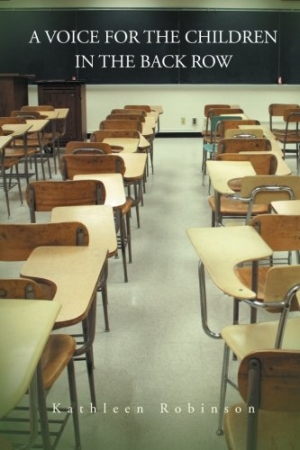A Voice for the Children in the Back Row
A Voice for the Children in the Back Row is an insightful and poignant book that describes the struggles and triumphs of teaching students with unique needs in Caribbean settings.
Kathleen Robinson tells the stories of four students, each with distinct personalities and particular needs: One struggles to deal with the divorce of her parents; another is the son of a revolutionary; the third was forced to grow up too fast as he dealt with the reality of a dysfunctional home and absent parents; and the final one lived on the charity of an abusive woman. Through the interactions of these children with their teachers, Robinson paints a unique and memorable portrait of education.
Robinson is clear with the intention and execution of her work. She “hopes that the real-life episodes contained [in the text] will touch the hearts of [teachers] by rekindling the sparks they felt when they first walked down the aisle…to make a difference.” Robinson’s masterful storytelling does just that. She shows the powerful emotional interactions between teachers and students, summarizing moments of epiphany in statements like, “The more I reflected, the more I saw that I and not the child was the one with the problem.”
Robinson provides a variety of helpful secondary research materials for her readers at the end of each episode. The few illustrations effectively help to communicate the searching, subdued tone of the book. Robinson’s ability as a storyteller shines through when she employs techniques like suspense to hold the reader’s attention. For instance, she opens a chapter writing, “As I bent to sign the register that was on the principal’s desk, his presence hit me like a cold iron slab.” The person the teacher recognizes remains unnamed, holding the reader’s attention and urging him or her to continue.
The book begins a bit awkwardly with vocabulary that seems overly pompous. Robinson writes, as an example, “Each episodic illumination juxtaposes the parapsychological situation of a particular child to a distinctive historical epoch anecdotally told.” The length of the words and sentence syntax seem unnecessarily complex.
Overall, however, Robinson’s blend of narrative and dialogue, along with her honest portrayal and discussion of the interactions between teachers and their difficult students, is refreshing. She provides a hopeful glimpse into the education of those students in the back row.
Reviewed by
Emily Adams
Disclosure: This article is not an endorsement, but a review. The publisher of this book provided free copies of the book and paid a small fee to have their book reviewed by a professional reviewer. Foreword Reviews and Clarion Reviews make no guarantee that the publisher will receive a positive review. Foreword Magazine, Inc. is disclosing this in accordance with the Federal Trade Commission’s 16 CFR, Part 255.

